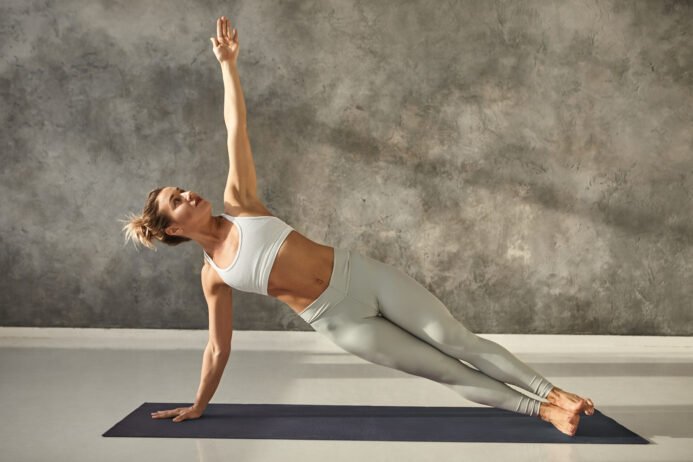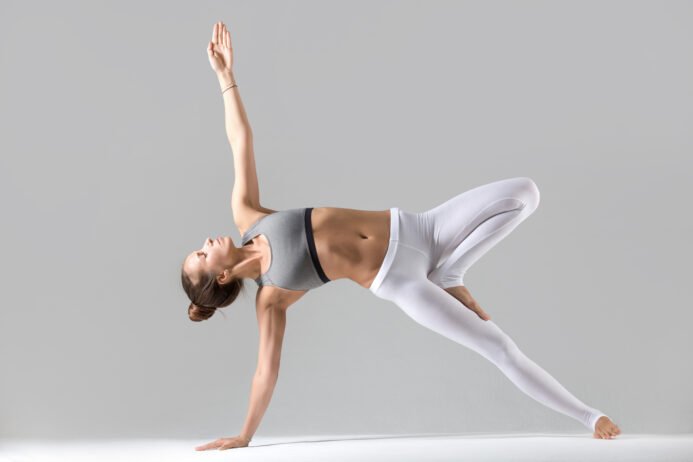As of 1:00 PM IST on Thursday, October 9, 2025, Pilates has emerged as a popular choice for those seeking a low-impact workout that builds strength, flexibility, and balance. Originating from Joseph Pilates in the early 20th century, this exercise system focuses on core stability and controlled movements, making it ideal for beginners. Before stepping onto a mat, understanding the basics can set you up for success. This guide covers what you need to know, from benefits to preparation, to start your Pilates journey confidently.
What Is Pilates?


Pilates is a mind-body workout emphasizing core strength, posture, and alignment through precise, flowing movements. Performed on a mat or with specialized equipment (like reformers), it targets deep abdominal muscles, back, and pelvic floor, enhancing overall body control. Mat Pilates, the focus here, uses body weight as resistance, making it accessible with minimal gear.
Key Benefits for Beginners
- Core Strength: Strengthens the “powerhouse” (abs, lower back, glutes), improving stability.
- Flexibility: Gentle stretches lengthen muscles, reducing stiffness.
- Posture: Aligns spine and shoulders, countering sedentary habits.
- Injury Prevention: Builds balanced muscle support, lowering strain risk.
- Mental Focus: Requires concentration, reducing stress.
A 2024 Journal of Sports Medicine study found that 8 weeks of mat Pilates improved core endurance by 20% and flexibility by 15% in beginners.


Essential Information Before Starting
1. Understand the Basics
- Breathing: Inhale through the nose to prepare, exhale through the mouth to engage the core. This oxygenates muscles and aids control.
- Alignment: Keep your spine neutral, shoulders relaxed, and pelvis stable unless instructed otherwise.
- Movements: Focus on slow, deliberate actions—quality over quantity.
2. Gear Up
- Mat: Use a non-slip yoga or Pilates mat (at least 4-6mm thick) for cushioning and grip. Cost: ₹500-₹2,000 in India (2025 prices).
- Clothing: Wear fitted, breathable activewear to monitor form.
- Optional: A small towel or Pilates ring for added challenge.
3. Prepare Your Body
- Warm-Up: Spend 5-10 minutes with dynamic stretches (e.g., cat-cow, leg swings) to loosen joints.
- Hydration: Drink 200-300ml of water 30 minutes before.
- Space: Clear a 6×6-foot area, free of obstacles.
4. Know Your Limits
- Health Conditions: Avoid if you have recent injuries, severe back pain, or pregnancy without a doctor’s approval.
- Pace Yourself: Start with 10-15 minutes, 2-3 times weekly, building to 30-45 minutes.
Basic Pilates Moves to Try
- Pelvic Curl: Lie on your back, knees bent, feet hip-width apart. Inhale to prepare, exhale to lift hips to a bridge, hold, then lower. Repeat 8-10 times.
- The Hundred: Lie on your back, lift head and shoulders, extend legs at a 45-degree angle, pump arms up and down for 100 counts (10 breaths of 10 pumps).
- Spine Twist: Sit with legs extended, inhale to lengthen spine, exhale to twist torso to one side, alternate 6-8 times.
Focus on form—engage your core and avoid straining your neck.
Common Mistakes to Avoid
- Rushing: Speed compromises control; move deliberately.
- Poor Posture: Slouching or arching the back can cause injury.
- Holding Breath: Consistent breathing is key to engagement.
- Overdoing It: Soreness is normal, but sharp pain signals a stop.
Sample Beginner Routine
- Warm-Up (5 mins): Cat-cow stretch, arm circles.
- Main Session (15 mins): Pelvic Curl (8 reps), The Hundred (50 counts), Spine Twist (6 reps per side).
- Cool-Down (5 mins): Child’s pose, hamstring stretch.
- Total: 25 minutes, 2-3 times weekly.
Expert Tips
- Instructor Priya Desai: “Start with a beginner class or video to learn alignment. Consistency beats intensity—aim for 2 sessions weekly.”
- Physiotherapist Dr. Anil Mehta: “Pilates strengthens the deep core, supporting joints. Beginners should master breathing first.”
Progression and Goals
- Week 1-2: Focus on form, 2 sessions.
- Month 1: Add 5-10 minutes, try new moves like Single Leg Stretch.
- Long-Term: Aim for 3-4 sessions, integrating equipment if desired.
Precautions
- Injury: Stop if you feel pain beyond mild discomfort; consult a professional.
- Medical Advice: Get clearance if you have chronic conditions like osteoporosis.
Final Thoughts
Pilates on the mat is a beginner-friendly path to improved strength, flexibility, and mental clarity, backed by science as of October 9, 2025. With the right preparation—proper gear, warm-up, and focus—you can start today with a 15-minute session. Roll out your mat and embrace the journey to a stronger, more balanced you. What’s your first Pilates goal?


